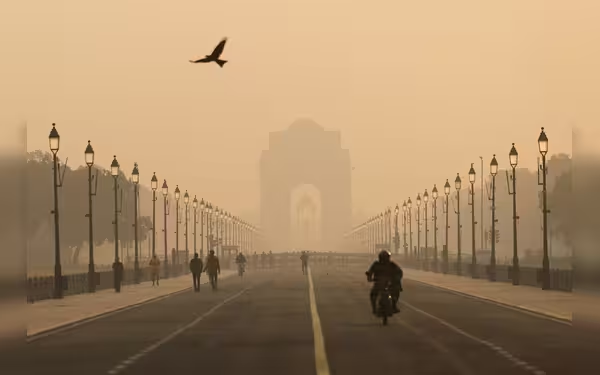Saturday, November 16, 2024 07:24 PM
New Delhi Explores Artificial Rain to Tackle Air Pollution Crisis
- New Delhi faces severe air pollution crisis.
- Government considers artificial rain as a solution.
- Air quality index reaches hazardous levels.
 Image Credits: tribune.com.pk
Image Credits: tribune.com.pkNew Delhi is considering artificial rain to combat severe air pollution, as the air quality index reaches hazardous levels.
New Delhi, the bustling capital of India, is grappling with a severe air pollution crisis that has raised alarms among health officials and residents alike. The air quality in the region has deteriorated significantly, leading to a surge in respiratory illnesses among the population. In response to this pressing issue, the Indian government is exploring innovative solutions, including the possibility of using artificial rain to cleanse the air.
On Tuesday, Environment Minister Gopal Rai announced the government's intention to implement artificial rain as a strategy to combat the alarming levels of pollution. He highlighted the critical situation by stating, “I appeal to the federal environment minister…now in Delhi and north India, the pollution has reached the border of 400.” This statement refers to the air quality index (AQI) score, which indicates that the air quality has reached hazardous levels, posing serious health risks to the citizens.
The concept of artificial rain, also known as cloud seeding, involves dispersing substances into the atmosphere to encourage precipitation. This technique has been used in various parts of the world to enhance rainfall and mitigate drought conditions. However, its application in urban areas to address air pollution is relatively novel and raises questions about its effectiveness and potential side effects.
As the government considers this approach, it is essential to recognize the underlying causes of air pollution in New Delhi. Factors such as vehicular emissions, industrial discharges, and construction dust contribute significantly to the deteriorating air quality. While artificial rain may provide temporary relief, it is crucial to implement long-term solutions that address these root causes.
The exploration of artificial rain as a means to combat air pollution in New Delhi reflects the urgency of the situation. While innovative solutions are necessary, they must be part of a broader strategy that includes stricter regulations on emissions, promotion of cleaner technologies, and public awareness campaigns. Only through a comprehensive approach can the city hope to achieve sustainable improvements in air quality and protect the health of its residents.













